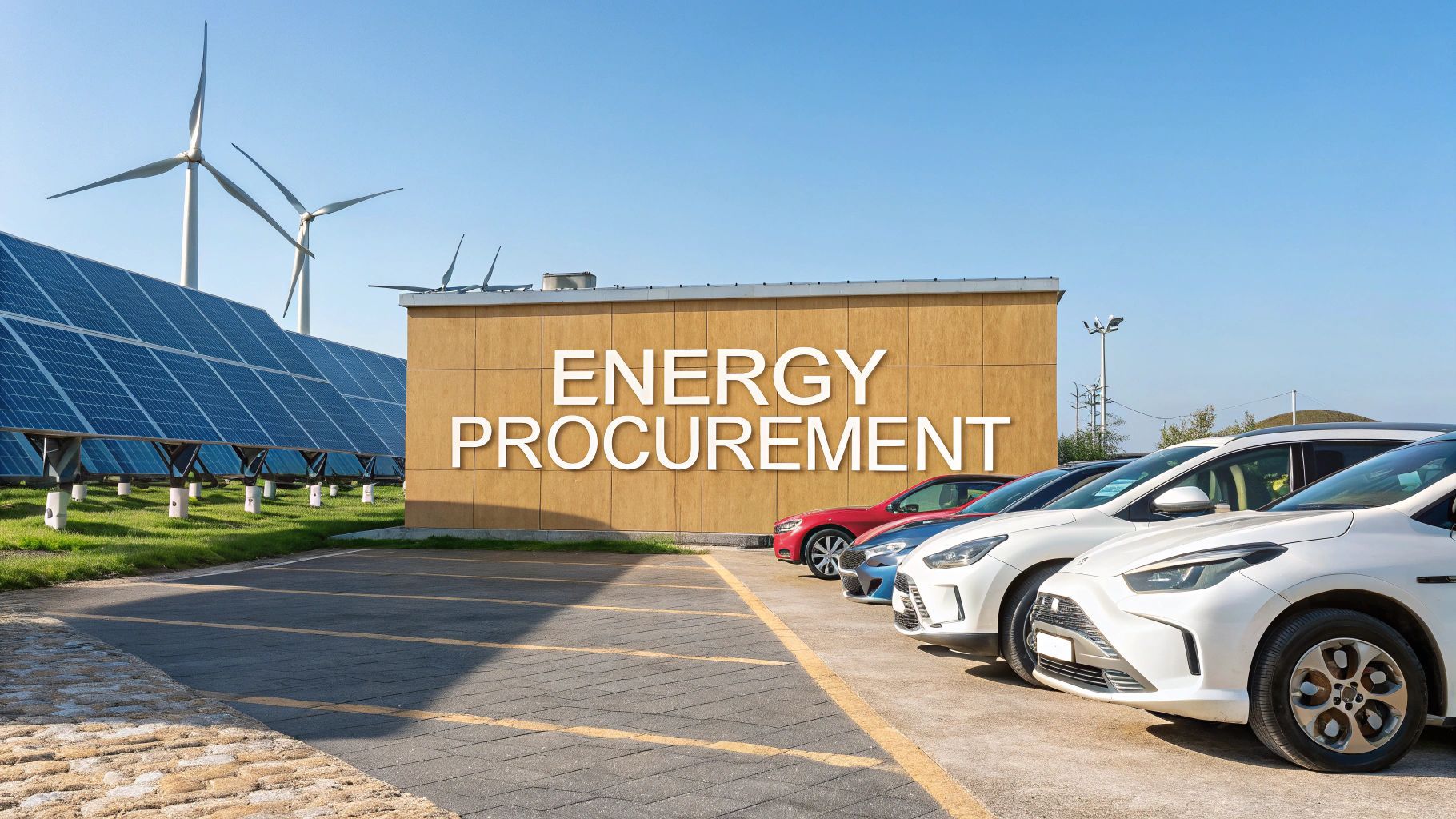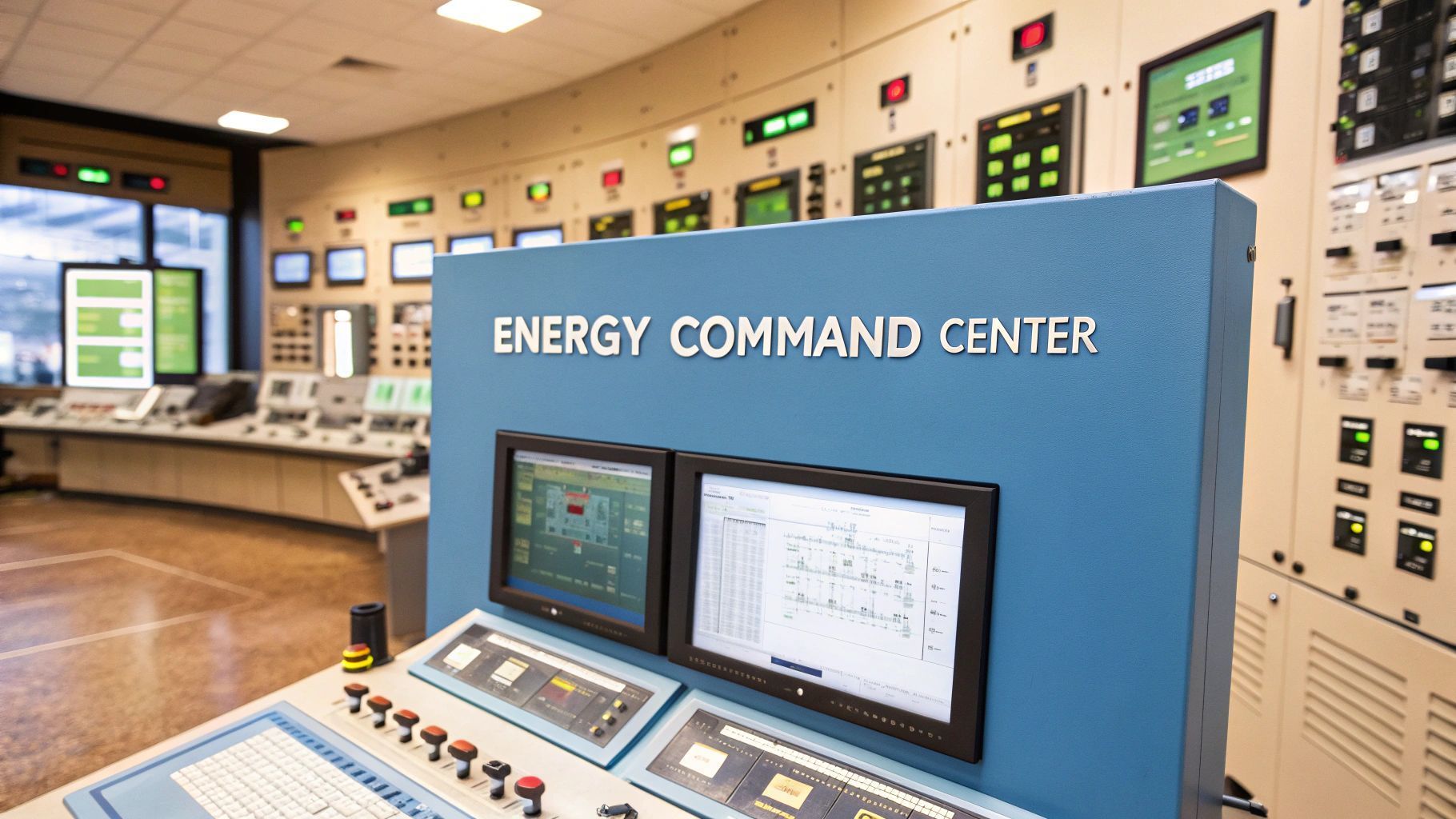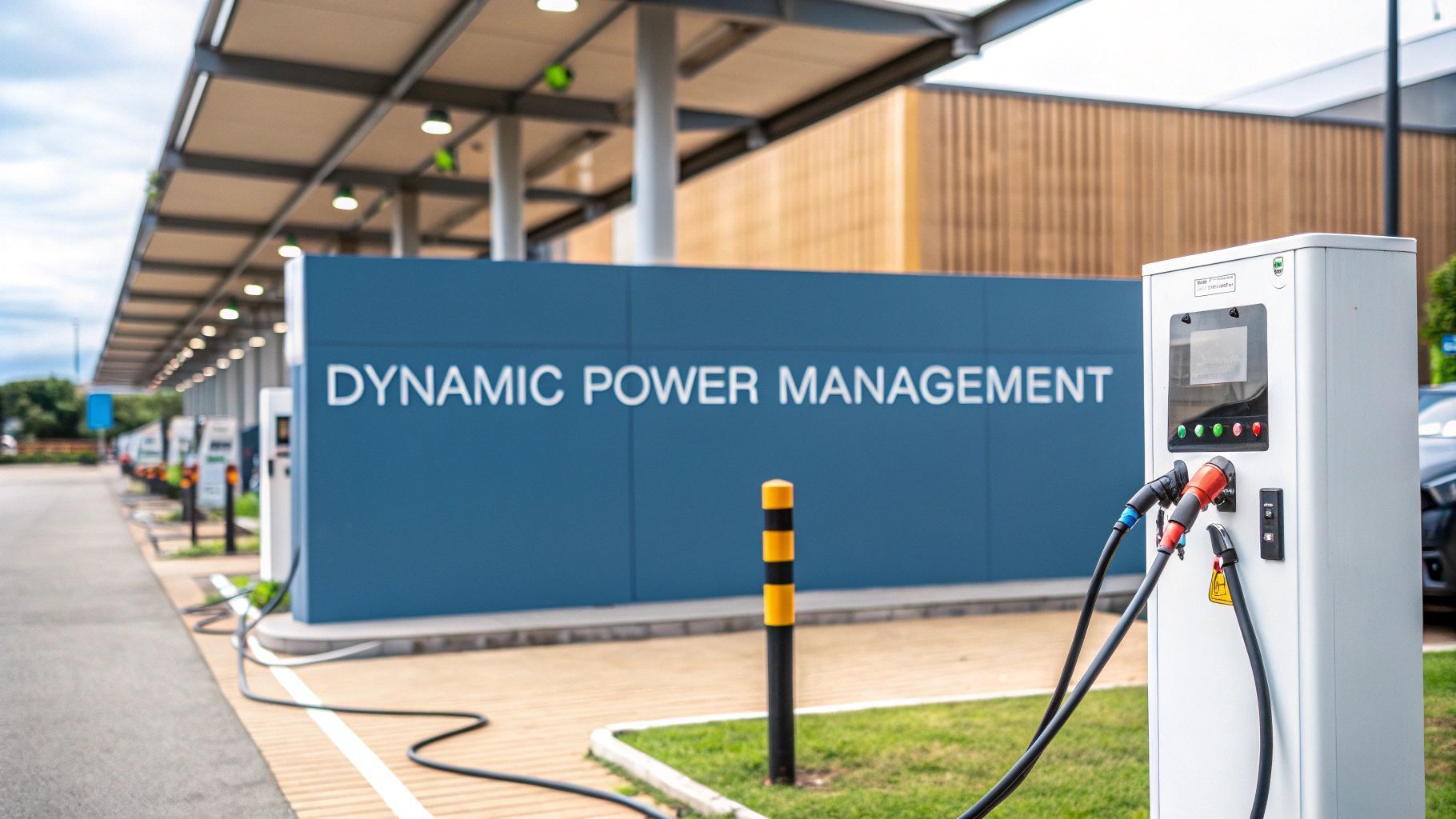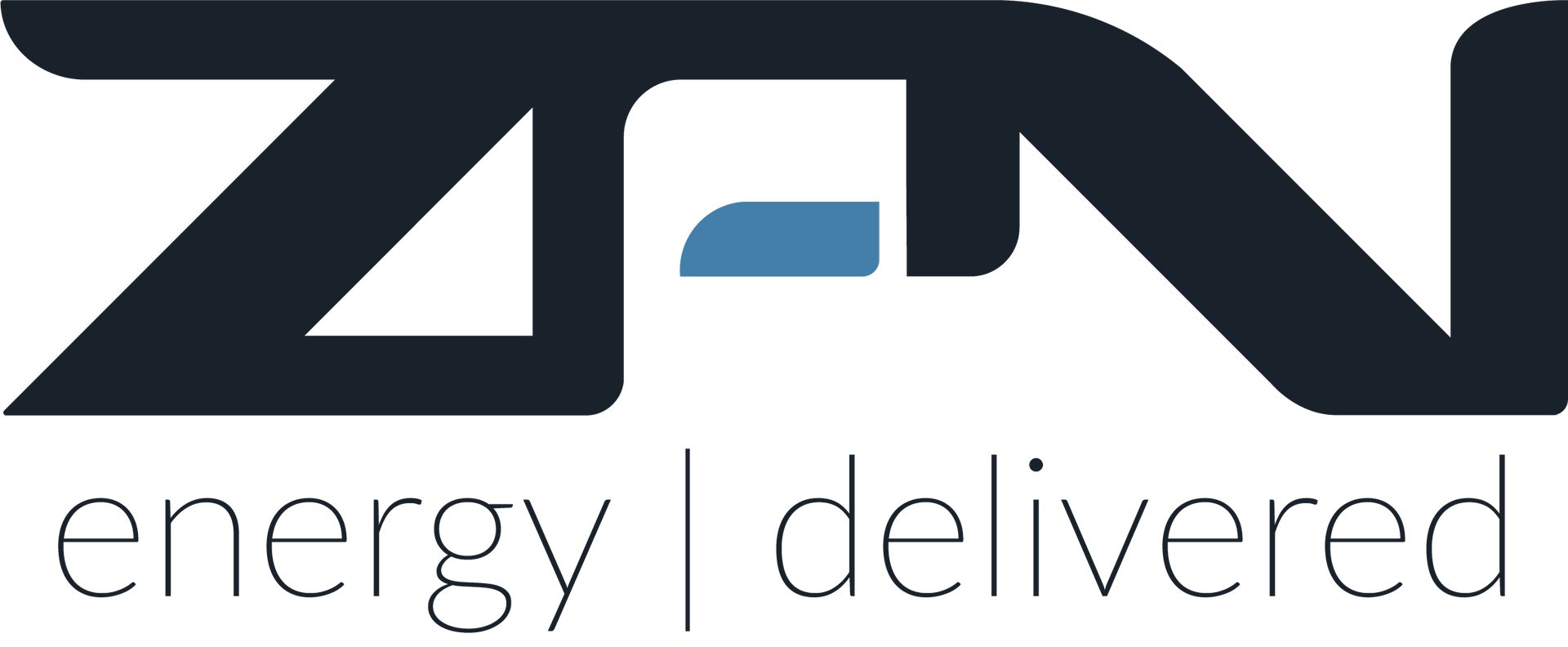A Guide to Reducing Carbon Footprint for Businesses
Cutting your business's carbon footprint is about more than just good intentions; it demands real, strategic investments in the right technology. For many UK businesses, that means getting serious about distributed energy —things like on site renewables, grid scale batteries and intelligent EV charging infrastructure. Let's move past the abstract goals and look at a practical path to making a serious dent in your emissions.
Your Starting Point for Corporate Carbon Reduction

The pressure to decarbonise is no longer some far-off concern. It's front and centre—a core demand from investors, customers and regulators who are all taking a much closer look at how businesses are performing environmentally. Vague sustainability pledges just don't cut it anymore; the market wants to see measurable, high-impact action.
This guide is all about the practical application of technologies that deliver exactly those kinds of results. We'll dig into how smart investments in distributed energy can forge a more resilient, efficient and competitive operation. At its heart, this strategy is about combining on site renewables with intelligent storage and consumption, especially around EV charging.
The Power of Integrated Energy Systems
Imagine this for a moment. Your business generates its own clean electricity from solar panels during the day, storing any surplus in a battery system. That stored energy can then power your operations during expensive peak grid times or charge up a fleet of electric vehicles overnight, even if you have a constrained grid connection. This isn't science fiction; it's an achievable reality that directly tackles your carbon output head-on.
The key components that make this work are:
- Combined On Site Renewables: Think solar panels on your roof generating clean electricity right where you need it.
- Grid Scale Batteries: These are the game-changers, letting you store excess energy for later, providing grid stability and helping you sidestep local grid limitations.
- EV Charging and Batteries: This means installing rapid or even mobile EV charging that runs on your stored renewable energy, not just pulling from the grid at the most expensive times.
Of course, a fundamental piece of any corporate carbon reduction puzzle involves understanding and unlocking commercial building energy efficiency —it’s a core strategy for sustainable operations. These integrated systems offer a powerful, practical route to slashing emissions and turning ambitious net-zero targets into something you can actually achieve. You can discover more about structuring these systems with a robust business energy management strategy.
The good news is that UK businesses are already operating within a national context of solid progress. UK greenhouse gas emissions were recorded at 413.7 million tonnes of CO2 equivalent (MtCO2e), which is a remarkable 50.4% lower than 1990 levels . You can learn more about this on the Committee on Climate Change website.
Using Distributed Energy for a Greener Operation

To make a real dent in your carbon footprint, you need to go beyond the usual efficiency tweaks. It's time to fundamentally change your relationship with energy by adopting distributed energy resources.
Think of distributed energy as smaller-scale power generation and storage technologies located right where you need them rather than relying entirely on the centralised national grid.
This approach is all about creating your own intelligent, local energy ecosystem. The core idea is simple but powerful: combine on site renewables like solar panels with grid scale batteries . This pairing gives you far greater control, boosts resilience and offers a direct route to slashing your Scope 2 emissions, particularly when deploying EV charging from constrained grid connections.
The Synergy of On Site Renewables and Battery Storage
Picture a typical manufacturing facility. Rooftop solar panels are generating clean electricity all day, powering machinery and lighting directly. But what happens to the surplus energy you don't use immediately? It gets channelled straight into an on site battery, storing that clean power for later.
When the sun goes down, the facility doesn't have to switch back to expensive, high-carbon electricity from the grid. Instead, it draws on the clean energy saved in its battery to run evening shifts or power its EV charging infrastructure. It’s a game-changer for reducing reliance on the grid during its most carbon-intensive and costly periods.
This combination unlocks several key advantages:
- Maximised Self-Consumption: You get to use as much of your own clean energy as possible, directly displacing grid power.
- Reduced Peak Demand Charges: By tapping into stored energy during peak hours, you can avoid the hefty charges many suppliers add based on your highest usage.
- Enhanced Energy Resilience: If a power cut hits, a battery can provide backup power to keep critical operations online, preventing costly downtime.
This shift towards on site generation and storage also amplifies the benefits of a decarbonising grid. The UK has made significant strides in this area, with the carbon intensity of its Scope 2 electricity generation dropping by 14.5% in a single year. By generating your own power, you build on this national progress for even greater emissions reductions. You can explore more data on UK GHG emissions factors to see the full picture.
Overcoming Grid Constraints with Intelligent Technology
One of the biggest hurdles for businesses looking to decarbonise is a constrained grid connection. You might want to install a bank of rapid EV charging points for a new electric fleet but the local grid simply can't handle the load without a prohibitively expensive and time-consuming upgrade.
This is where combining EV charging with batteries becomes a crucial solution.
A battery acts as a buffer. It can trickle-charge from a weak grid connection during off-peak hours when demand is low. When your vehicles need a fast charge during the day, the battery discharges its stored energy at a high rate, delivering the power your chargers need without overwhelming the local infrastructure.
This capability isn’t just for fixed charging stations either. Mobile EV charging units, often with their own integrated batteries, offer ultimate flexibility. They can be deployed wherever they’re needed most—whether that’s handling a temporary surge in demand at a depot or charging vehicles at remote sites, all without needing a permanent grid connection.
Building a Business Case for Distributed Energy
Investing in on site renewables and battery storage isn't just an environmental decision; it's a solid business move. The technology creates a virtuous cycle of operational and financial benefits that speak for themselves.
| Benefit Category | Description | Impact on Carbon Footprint |
|---|---|---|
| Energy Independence | Generate and store your own electricity, reducing your reliance on volatile energy markets. | Directly cuts Scope 2 emissions by replacing grid electricity with self-generated renewables. |
| Operational Resilience | Maintain power for critical systems during grid outages, avoiding costly disruption and losses. | Ensures your low-carbon operations can continue without interruption, proving their viability. |
| Cost Savings | Lower electricity bills through self-consumption and avoiding peak charges and massive grid upgrade costs. | Frees up capital that can be reinvested into other decarbonisation initiatives across the business. |
When you view these technologies as interconnected parts of a single strategy, you unlock opportunities for deep carbon cuts that are simply impossible with isolated actions. It’s about building a robust, self-sufficient energy system that is cleaner, cheaper and far more reliable.
Integrating EV Charging with Smart Energy Management
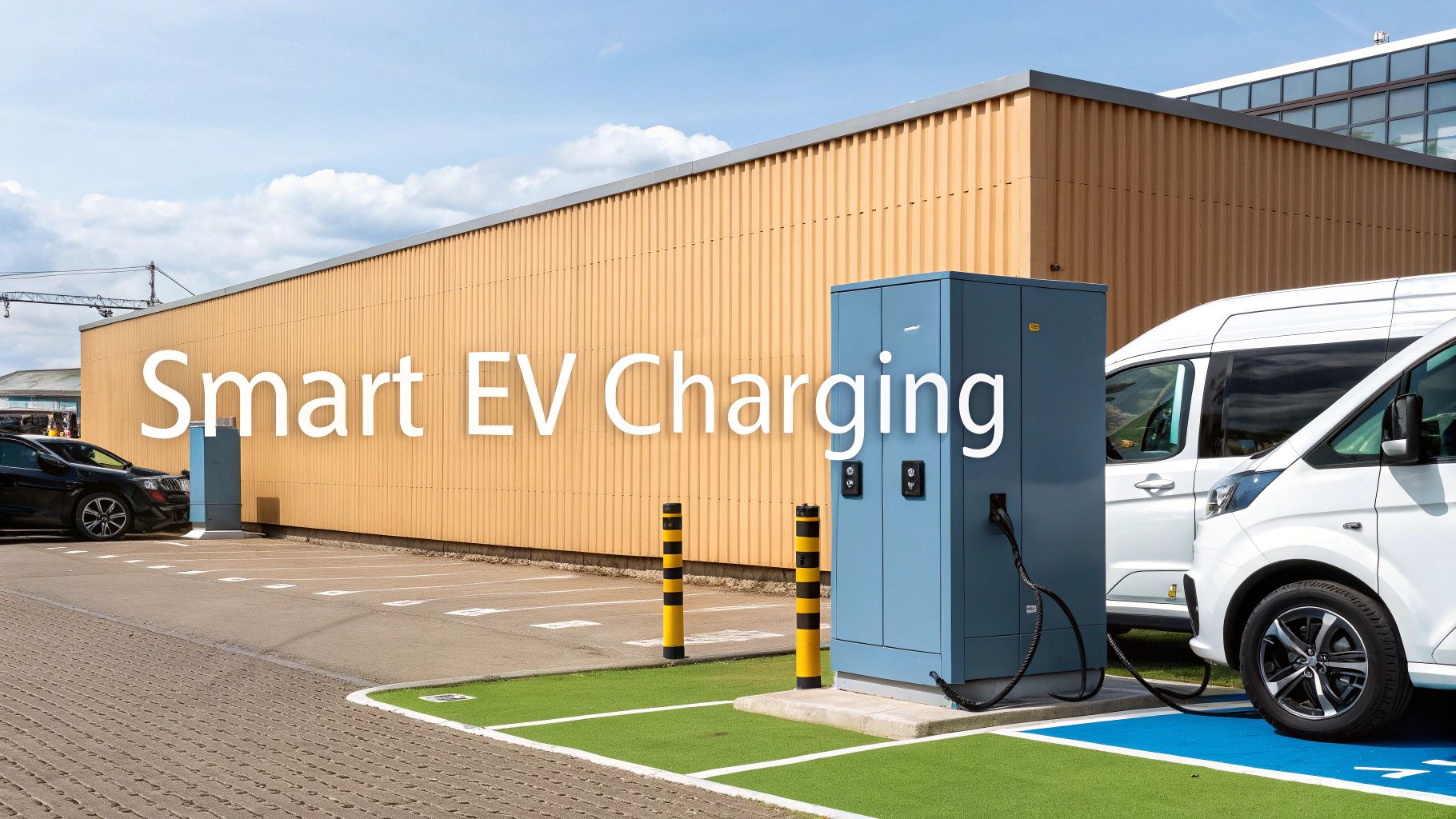
Switching your vehicle fleet to electric is one of the most powerful statements a business can make about its commitment to sustainability. But it's about more than just swapping diesel vans for EVs. To do it right, you need to think intelligently about how EV charging fits into your entire distributed energy ecosystem.
Simply plugging in a fleet of new vehicles without a smart strategy can lead to disaster. You might trade high fuel costs for crippling electricity bills or worse, find your local grid connection can't handle the strain.
The key is to stop seeing EV charging as just another utility bill. Instead, view it as a dynamic, flexible part of your overall energy management. This shift in thinking is what turns an electric fleet from a huge energy drain into a genuine operational asset.
Matching Charging Technology to Your Operational Needs
There's no one-size-fits-all solution for EV charging. The right choice depends entirely on the daily rhythm of your business. A logistics company whose vans return to the depot overnight has completely different needs from a sales team that needs to top up on the road.
Getting this right starts with understanding your own operational patterns.
For instance, if your fleet follows predictable routes and comes back to base every evening, standard AC chargers are often the perfect fit. They can replenish the batteries overnight, taking advantage of cheaper, off-peak electricity. This approach is gentle on your grid connection and keeps running costs down.
On the other hand, a high-utilisation fleet—think taxis or last-mile delivery vehicles running multiple shifts—needs something far more powerful. This is where rapid EV charging becomes essential, delivering a significant charge in under an hour to keep vehicles on the road and earning their keep.
A common roadblock we see is businesses wanting to install multiple rapid chargers only to discover their local grid can't cope. Many commercial sites have constrained grid connections that just can't handle the immense power draw. This is where combining on site renewables and battery storage opens up a world of new possibilities.
Overcoming Grid Constraints with Battery Storage
That constrained grid connection can be a major headache. We've seen businesses quoted astronomical sums and told they face a multi-year wait for the local Distribution Network Operator (DNO) to upgrade the infrastructure. It’s enough to stop a decarbonisation project in its tracks.
A battery system offers a direct and often much faster solution. Instead of waiting for a costly grid upgrade, a battery acts as an on site energy reservoir. It can be trickle-charged from your existing grid connection during quiet periods like overnight.
When your vehicles need rapid EV charging during the day, the battery discharges its stored energy at a high rate, powering the chargers without ever overloading your grid connection. The battery essentially decouples your charging speed from your grid capacity, turning a major bottleneck into a managed, cost-effective asset.
You can learn more about how these systems work together in our deep-dive on the synergy between combined on site renewables, ev charging and batteries .
Flexible and Mobile EV Charging Solutions
For some businesses, fixed charging bays just aren't practical. If your operations are spread out, temporary or need to be flexible—like construction sites, outdoor events or emergency fleet support—you need a different approach. This is where mobile EV charging really shines.
These units are essentially batteries on wheels, ready to be deployed wherever you need power. A mobile charger can rescue a vehicle that's run flat in a remote location or create a temporary charging hub on a project site that has no permanent infrastructure.
This flexibility is crucial for businesses with non-traditional operations, ensuring that the benefits of going electric are accessible even where a grid connection isn't.
Choosing the Right EV Charging Solution
To help you decide on the best path for your fleet, this table breaks down the different technologies. It compares how each solution works and how it might impact your site's grid connection, giving you a clearer picture of how to decarbonise your transport footprint effectively.
| Charging Solution | Ideal Business Use | Key Advantage | Grid Connection Impact |
|---|---|---|---|
| Standard AC Charging | Overnight fleet charging at a central depot. | Low installation cost and minimal grid stress. | Low impact; can be managed with smart scheduling. |
| Rapid EV Charging (Standalone) | High-turnover fleets needing fast charging. | Minimises vehicle downtime, boosting productivity. | Very high; often requires expensive grid upgrades. |
| Mobile EV Charging | Remote sites, events or emergency fleet support. | Ultimate flexibility; charging wherever it is needed. | None at the point of use; depends on where the unit is charged. |
| EV Charging with Batteries | Businesses with constrained grid connections. | Enables rapid charging without costly grid upgrades. | Mitigated; battery acts as a buffer for the grid. |
| Combined Renewables, Batteries & EV Charging | Any business seeking maximum carbon reduction and energy independence. | Creates a self-sufficient energy ecosystem that minimises grid reliance and costs. | Minimal; prioritises self-generated clean energy. |
By strategically choosing and combining these technologies, you can transform your fleet from a major source of emissions into a cornerstone of your carbon reduction strategy.
Combining Renewables, Batteries and Distributed Energy
The most sophisticated approach is to build a fully integrated, self-sufficient energy system right on your site. When you combine on site renewables like solar panels with a battery and your EV chargers, you create a powerful ecosystem for distributed energy .
Here’s how it works:
- During the day, your solar panels can directly power your buildings and charge your vehicles.
- Any excess solar generation is stored in your battery instead of being sold back to the grid for a pittance.
- Later, that stored solar energy can be used to charge vehicles when the sun isn't shining or to power your site during expensive peak-demand periods.
This holistic setup delivers benefits on multiple levels. You dramatically reduce your reliance on grid electricity, slash your Scope 2 emissions and insulate your business from volatile energy prices. It's the ultimate step toward energy independence and decarbonisation.
How Battery Storage Solves Grid Constraints
So, you’ve got ambitious plans to decarbonise your business. Fantastic. But then you run into a brick wall: the local electricity grid. It’s a frustratingly common story. You might have the perfect blueprint for on site solar or a fleet of rapid EV chargers, only to be hit with a mind-boggling quote and a multi-year wait for a grid upgrade.
This single bottleneck can kill a project before it even gets off the ground.
The good news? There’s a direct and surprisingly effective solution. A Battery Energy Storage System (BESS) fundamentally changes your relationship with the grid, turning that hard limit into a flexible asset. Think of it as an energy reservoir, letting you decouple what you need from what the grid can provide at any given moment.
For any business bumping up against grid capacity, this technology is a game-changer. It gives you the power to push ahead with high-impact projects like EV charging from constrained grid connections even when the local infrastructure just isn’t up to the task.
Unlocking Impossible Decarbonisation Projects
Picture a busy logistics depot. The case for electrifying its delivery vans is a no-brainer—it promises huge cuts in both carbon emissions and fuel bills. The plan hinges on installing several rapid EV charging points to get vehicles back on the road quickly during a busy shift.
Simple enough, right? Except the local grid connection was installed decades ago. It just can’t handle the immense power surge from multiple rapid chargers running at once. When they ask the Distribution Network Operator (DNO), they’re quoted an eye-watering sum to upgrade the substation, a job that could drag on for years.
This is exactly where a BESS becomes the key that unlocks the whole project.
Instead of paying for a slow, costly grid upgrade, the business installs a BESS. This system quietly trickle-charges from the weak grid connection overnight, when demand is low and electricity is cheap. During the day, that fully charged battery can unleash high power, supporting multiple rapid chargers at the same time without ever troubling the grid’s official capacity.
This clever workaround completely bypasses the grid constraint. The depot gets the rapid charging it needs, the fleet transition moves forward and the business takes a massive step towards reducing its carbon footprint . All without waiting years for the DNO.
Want to dive deeper? You can explore our detailed guide on how commercial solar and battery storage powers your business and EV fleet.
The Technical and Financial Benefits
Seeing a BESS as just ‘storage’ really misses the point; it’s a critical enabler. It makes projects that were financially or technically impossible suddenly viable. The benefits stack up, creating a business case that’s hard to ignore.
Key Advantages of Using a BESS for Grid Constraints:
- Avoids Prohibitive Grid Upgrade Costs: The capital cost of a BESS is often a fraction of what major grid reinforcement work would set you back.
- Accelerates Project Timelines: A battery system can be up and running in months, not the multiple years often quoted for DNO upgrades.
- Maximises On Site Renewable Use: Got solar panels? A BESS stores all that surplus clean energy, letting you power your EV chargers with your own self-generated electricity. That cuts costs and carbon.
- Enables Revenue Stacking: Your BESS can do more than just solve your immediate problem. It can earn you money by participating in grid-balancing services, creating a whole new income stream.
From Grid-Scale Batteries to Mobile Solutions
The idea of using batteries to buffer the grid isn’t just for individual sites. The same principle is at work with massive grid scale batteries that help stabilise the entire national network, allowing more renewables to connect without causing blackouts. Your on site BESS is really just a smaller version of this vital infrastructure.
This flexibility even extends to mobile EV charging . A charging unit with its own integrated battery can be dropped anywhere, even in locations with no grid connection at all. It’s perfect for temporary events or emergency fleet support, proving that batteries can deliver power completely independently.
Ultimately, when you integrate EV charging and batteries , you’re not just fixing a problem. You are building a more resilient, cost-effective and sustainable energy future for your business—a strategic investment that solves today’s headaches and prepares you for whatever comes next.
Building Your Practical Roadmap to Net Zero
Turning ambitious net zero goals into reality needs a clear, structured plan. This is where many well-intentioned sustainability initiatives stumble—moving from a great idea to a tangible project. But a methodical approach ensures your investments in technologies like EV charging and batteries actually deliver the impact you're looking for.
This isn't about one single grand gesture. It's about a series of interconnected, data-driven decisions that build momentum over time.
It all starts with getting under the bonnet of your energy profile. A proper energy audit is the only way to kick things off and I'm not just talking about glancing at your utility bills. This means digging into half-hourly data to see precisely when and where your site is drawing the most power. You're looking for the patterns and peaks that represent your biggest—and often most expensive—opportunities for carbon reduction.
This granular data is the bedrock for building a compelling business case. It lets you model the real financial and environmental returns of specific changes, like pairing on site renewables with a battery system to shave those costly, carbon-heavy peaks for good.
Pinpointing Your Biggest Opportunities
Once the energy audit is done, the data will practically scream where you need to focus. For a logistics company, the analysis might show that the highest energy demand hits when the fleet returns to the depot in the evening. That points directly to a strategy centred on smart EV charging . A manufacturing firm, on the other hand, might see its biggest spike from machinery start-ups—a sudden load that a battery could smooth out effortlessly.
The goal here is to find the actions that give you the biggest carbon reduction for the most manageable cost. Go for the low-hanging fruit first. It builds confidence and makes it much easier to get internal buy-in for the bigger, longer-term projects down the line.
This visual shows how a battery can enable EV charging, even if you’re stuck with a constrained grid connection.

As you can see, the battery system acts as a buffer, allowing you to power high-demand assets like rapid EV charging without being held back by a weak grid.
Phasing Your Rollout for Maximum Impact
Trying to do everything at once is a classic recipe for failure. A phased rollout allows you to manage costs, learn as you go and show a track record of success. A logical sequence often looks something like this:
-
Phase One: The Foundational Investment. Install a battery to solve an immediate headache, like making EV charging possible from a constrained grid connection . This gives you an instant win by enabling a project that was previously a non-starter and creates a platform for everything that follows.
-
Phase Two: On site Generation. With the battery in place, you can now add combined on site renewables like solar panels. Your battery can store that self-generated clean energy, making it far more valuable and slashing your reliance on the grid even further.
-
Phase Three: Expansion and Optimisation. Now you can confidently expand your rapid EV charging infrastructure, knowing your energy system can handle it. At this stage, you can even explore advanced strategies like participating in grid services to create new revenue streams from your on site battery.
This approach turns a daunting one-off capital expense into a manageable, multi-stage investment where each step logically builds on the last.
Building a Compelling Business Case
To get the green light, your proposal has to speak the language of finance just as fluently as it speaks sustainability. A strong business case for distributed energy systems should be built on several key pillars:
- Direct Cost Savings: Calculate the projected drop in your electricity bills from using your own energy and dodging peak tariffs.
- Avoided Costs: Put a number on the huge expense of grid upgrades that a battery helps you sidestep completely.
- Operational Resilience: Model the financial hit you'd avoid by preventing downtime during a power outage.
- Future Revenue: Project the potential income from grid services or by offering paid rapid EV charging to the public.
This robust financial argument, combined with the clear carbon reduction benefits, makes for an undeniable case. It’s also worth looking at the bigger picture. In 2023, for every £1 million of economic activity, the UK emitted 160 tonnes of CO2 equivalent . That's a massive 71.4% reduction from the 560 tonnes emitted per £1 million back in 1990. It’s proof that economic growth and decarbonisation can and do go hand-in-hand. You can learn more about these environmental and economic trends on the ONS website .
Success is measured not just in tonnes of CO2 saved but in pounds sterling. Use data from smart meters, battery dashboards and EV charging platforms to continuously track your progress. This data allows you to report accurately on carbon reductions and demonstrate a clear return on investment to stakeholders, justifying the next phase of your roadmap.
Answering Your Key Questions
When you start digging into a serious carbon reduction strategy, practical questions always come up. It's one thing to have a goal but it's another to figure out the real-world challenges, especially around cost and grid limitations.
Let's tackle some of the most common queries we hear from businesses just starting this journey.
How Can My Business Afford The Upfront Cost?
It’s true, the initial investment for EV charging and batteries can look steep on paper. But there are several ways to make it work financially without a huge capital outlay. Options like asset finance, leasing or even "as-a-service" models are becoming common, letting you pay a manageable monthly fee instead.
But here’s the crucial part: you have to look beyond the initial price tag. The return on your investment comes from multiple places—lower energy bills, avoiding those eye-watering grid upgrade fees and even opening up new revenue streams from grid services. You really need to run a total cost of ownership (TCO) analysis, not just focus on the upfront spend.
A TCO analysis gives you the full financial picture. It factors in all the long-term savings and potential income, often showing that the investment pays for itself far quicker than you’d think. It turns what looks like a cost into a profitable asset.
Can We Decarbonise with a Constrained Grid Connection?
Absolutely. In fact, this is exactly where a battery system becomes a game-changer. A battery can trickle-charge from a weak grid connection during off-peak hours when there’s little demand.
Then, when you need the power, it can rapidly discharge all that stored energy to run high-demand equipment like rapid EV charging points or heavy machinery. This smart approach completely decouples your site’s power needs from the limitations of your grid connection.
This makes ambitious decarbonisation projects like electrifying an entire fleet completely doable without waiting months—or even years—for expensive grid reinforcement work from the local network operator.
What Is The First Practical Step to Take?
Before you do anything else, get a detailed energy audit. You can't fix what you don't measure. You need to know precisely where, when and how your business is using electricity. This data-first approach will shine a light on your biggest opportunities for reducing your carbon footprint .
Think of an audit as the foundation for everything that comes next. It provides the hard data you need to build a solid business case for any investment, ensuring your efforts are targeted where they’ll have the biggest impact.
Ready to overcome your grid constraints and accelerate your journey to net zero? ZPN Energy provides the integrated EV charging and battery storage solutions to make it happen. Explore our technologies and start building your practical roadmap today at https://www.zpnenergy.com.


